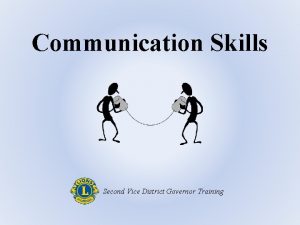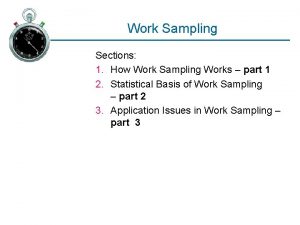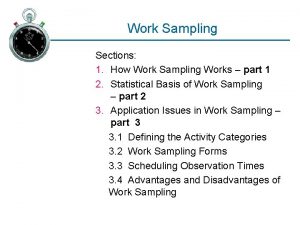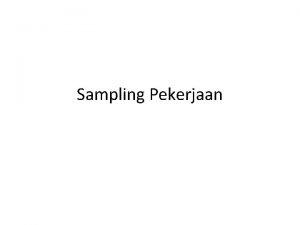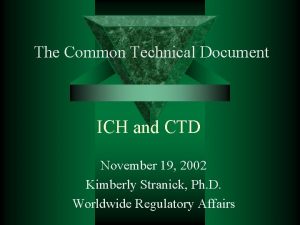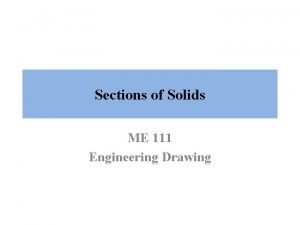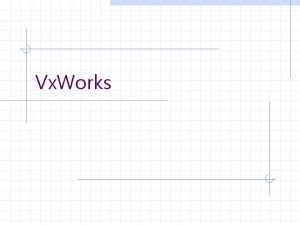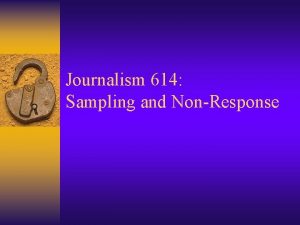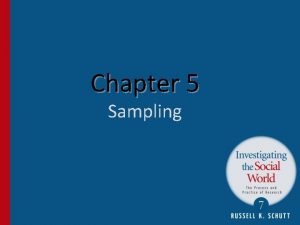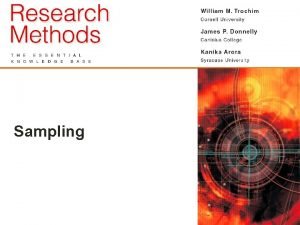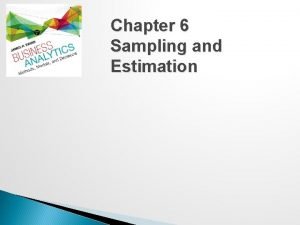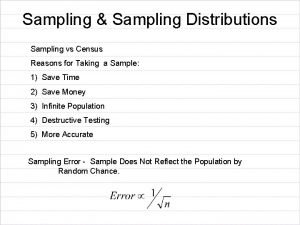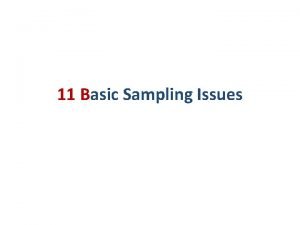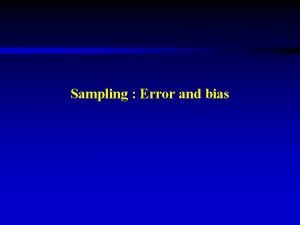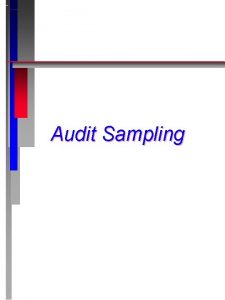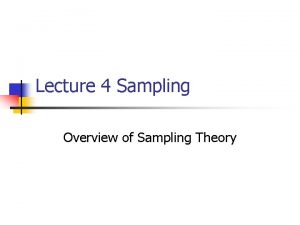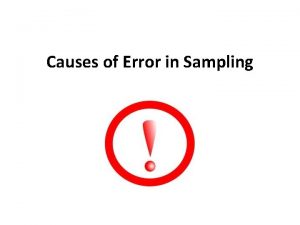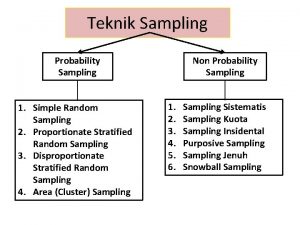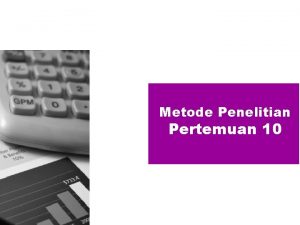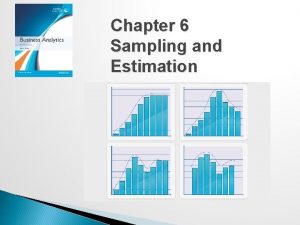Work Sampling Sections 1 How Work Sampling Works


























- Slides: 26

Work Sampling Sections: 1. How Work Sampling Works – part 1 2. Statistical Basis of Work Sampling – part 2 2. 1 Confidence intervals in Work Sampling 2. 2 Determining Number of Observations Required 2. 3 Determining Average Task Times and Standard Times 3. Application Issues in Work Sampling – part 3

Work Sampling 2. Statistical Basis of Work Sampling

Statistical Basis of Work Sampling § Statistical Basis of work sampling: § Binomial distribution: § parameter p = true proportion of time spent in a given category of activity § There are usu. multiple activity categories (e. g. 1) § we have p 1, p 2, . . , pk, . . , p. K proportions § for K different activity categories § sum of proportions must equal unity

Statistical Basis of Work Sampling §

Alternative Parameters §

Estimating the Proportion p §

2. 1 Confidence Intervals §

2. 1 Confidence Intervals §

2. 1 Confidence Intervals

2. 1 Confidence Intervals

2. 1 Confidence Intervals §

Example 2: Confidence Interval § Determine the 95% confidence interval for the proportion of time spent setting up the machines, category (1), in Example 1. Remember (example 1): § A total of 500 observations were taken at random times during a one-week period (40 hours) on 10 machines. Category (1) Being set up (2) Running production (3) Machine idle 40 Proportion Hrs per category 75/500 = 0. 15 x 40 = 6 300/500 = 0. 60 x 40 = 24 125/500 = 0. 25 x 40 = 10 1. 00

Example 2: Solution

2. 2 Number of Observations Required §

2. 2 Number of Observations Required §

2. 2 Number of Observations Required §

e. g. 3 Finding Required Observations §

Example 3: Solution

2. 3 Determining Average Task Times § Time standards established by work sampling: § not as accurate as those set by other methods § not appropriate for wage incentive plans § can be used when other work measurement techniques are not practical § e. g. when length of time required to use other techniques would be excessive § We will show to use WS to determine: § Average task time § Normal time per work unit § Standard time per work unit

2. 3 Determining Average Task Times § Average task time: § how much time required to complete average work unit § no consideration of worker’s performance during work § Time standard by work sampling § requires observer to correctly classify activity category during observation, and § also rating worker's performance § In both cases: § quantity of work units completed during duration of WS study must be counted

2. 3 Determining Average Task Times §

Example 4 Average Task Times in WS Suppose in Example 1 that a total of 1572 work units were completed by the 10 machines and that a total of 23 setups were accomplished during the 5 -day period. Determine, (a) the average task time per work unit during production, and (b) the average setup time

Example 4 Solution

Example 4 Notes §

2. 3 Determining Standard Times §

2. 3 Determining Standard Times §
 Safety at road works
Safety at road works Simple present work
Simple present work Health and safety at work act section 7
Health and safety at work act section 7 A consumer confidence researcher asks several retailers
A consumer confidence researcher asks several retailers Difference between stratified and cluster sampling
Difference between stratified and cluster sampling Difference between cluster and strata
Difference between cluster and strata Contoh time sampling dan event sampling
Contoh time sampling dan event sampling Cluster vs stratified sampling
Cluster vs stratified sampling Quota sampling definition and example
Quota sampling definition and example Natural sampling vs flat top sampling
Natural sampling vs flat top sampling Communication works for those who work at it
Communication works for those who work at it Contoh work sampling
Contoh work sampling Wso work sampling
Wso work sampling Work sampling technique
Work sampling technique Work sampling forms
Work sampling forms Consecutive sampling
Consecutive sampling Pengertian work sampling
Pengertian work sampling Cross section volume
Cross section volume Think on these things
Think on these things Declaration of independence sections
Declaration of independence sections Chapter 5 lesson 4 declaring independence
Chapter 5 lesson 4 declaring independence Ich common technical document
Ich common technical document Blood supply to the stomach diagram
Blood supply to the stomach diagram Me-111
Me-111 Sectioning in engineering drawing
Sectioning in engineering drawing Cutaways and cross sections definition
Cutaways and cross sections definition Revolves section
Revolves section










